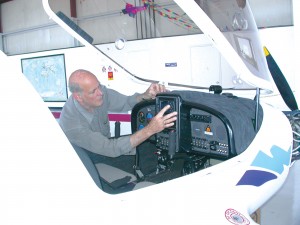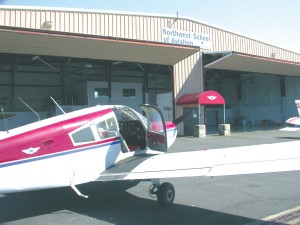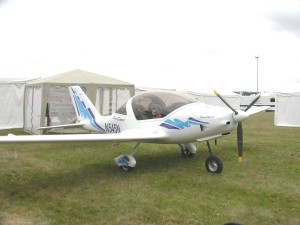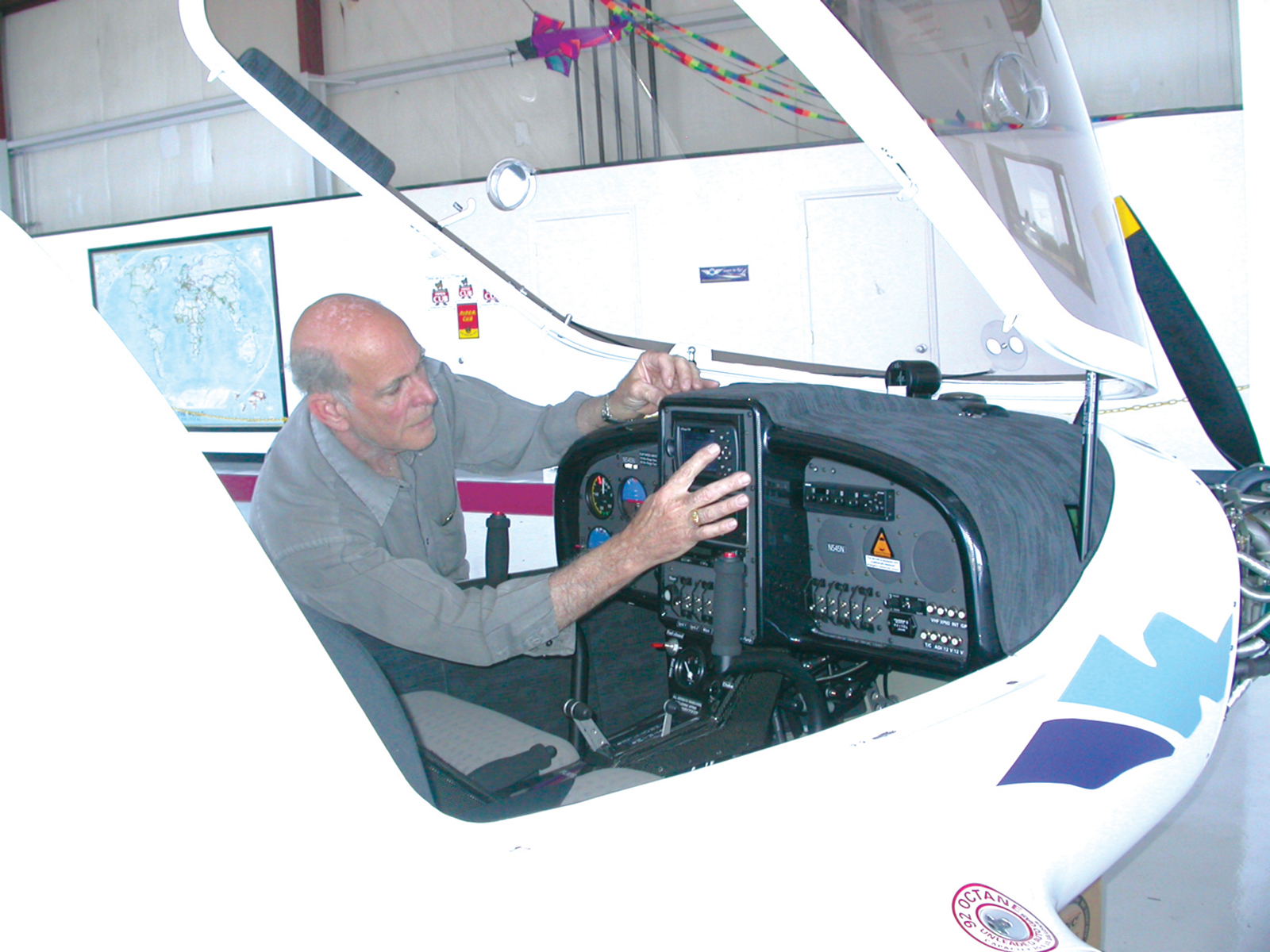By Terry Stephens
Snohomish County Airport (Paine Field) flight instructor Dave Wheeler believes so strongly that the Federal Aviation Administration’s new sport pilot licenses will generate a fresh wave of interest in flying that he’s invested in a new regional StingSport aircraft dealership to be a part of that market. He’s the only flight instructor at Paine Field providing training for sport pilot certificates.

Dave Wheeler, owner of Northwest School of Aviation at Paine Field, checks out the avionics package of flight instruments and GPS system in the new StingSport aircraft he’s using for qualifying sport pilots.
His new northwest regional dealership from Sportair USA of Little Rock, Ark., authorizes sales of the $108,000 planes throughout Washington, Oregon, Idaho, Montana and Wyoming. He’ll also be setting up a network of satellite dealers in the region.
“We’ve got three fulltime instructors and seven part-time for everything from sport and recreational pilot certificates to private pilot, an instrument rating, commercial, flight instructor and airline transport certificates,” Wheeler said.
But it’s the new sport pilot arena where he wants to be a major player. Training pilots at the airfield since 1976, Wheeler formed Northwest School of Aviation in 1999. A year ago, he consolidated his scattered fleet of Piper planes at Paine Field into a large new hangar for his J3-65 Cub, two PA28-140 Cherokees, a PA28R-200 Arrow and his most recent arrival, the 2006 StingSport TL2000.
His own interest in sport pilot training was kindled nearly two years ago when the FAA announced the new certificate. He’s already qualified one sport pilot in the flight service’s Cub and gets calls “almost daily” from people interested in the sport pilot license.
“This is going to be a big deal,” he said.
One of the prime reasons he chose the StingSport is that it was the favorite of all the new sport planes tested last fall by the editors of the Aircraft Owners and Pilots Association’s magazine, AOPA Pilot. They praised the plane’s “nice performance” and “nice stall characteristics” and said it was “well put together” and had “powerful control surfaces and a strong rudder.” More than 300 of the new planes are flying worldwide, including the smaller StarSport model.

Northwest School of Aviation has consolidated its fleet of Piper aircraft in a move to this larger hangar at Paine Field, which also houses the new lightweight StingSport aircraft Dave Wheeler sells throughout the Pacific Northwest (regional dealer).
The standard avionics package includes a new TruTrak ADI and Pictorial Pilot Turn-and-Bank instruments, a Garmin 296 color GPS built into the control panel along with a Garmin 320A transponder, and an ICOM 200 transceiver. An electronic Engine Information System keeps track of engine conditions, including RPM, fuel pressure, manifold pressure, oil pressure and system voltage.
The tricycle gear, adjustable three-bladed prop, Rotax 100-hp 912ULS engine and large, clear panoramic view canopy are popular features for the composite-bodied StingSport, which takes off at 45 knots, lands at 55 knots and cruises around 118 knots. An added feature is a GRS aircraft recovery parachute system for the plane, which has a wing span of 28 feet and a length of 20 feet, with a 44-inch wide cockpit. Maximum takeoff weight is 1,320 pounds, with a standard empty weight of 760 pounds.
“The plane feels like a sports car,” Wheeler said. “It has a 700-nautical mile range and a lot of standard features that sound like they might be just extras or options, but they’re already included.”
Wheeler was inspired as a youth by his father’s earning of a private pilot certificate and owning his own plane. At 14, he began hanging around Prosser Airport in Eastern Washington, washing planes and mowing grass just to be around pilots and aircraft.
He worked as a flight instructor for SkyTrek Aviation at Paine Field in 1985. In two years he became the chief pilot and then bought the business. Later, he worked for Boeing as a quality assurance manager for several years, before leaving in 1999 to launch the Northwest School of Aviation.
“I can’t wait to come to work every morning. It’s a lot of fun,” he said.

The new StingSport aircraft being marketed in the Northwest by Dave Wheeler was also on display at the Northwest EAA Fly-In in July at Arlington Municipal Airport.
But in practice, Wheeler takes a serious view of his flight instructing, focusing on graduating “thinking” pilots rather than ones who simply learn their instructor’s motions and styles.
“Just learning the moves happens all too often,” he said. “Talking about producing ‘thinking’ pilots is an overworked phrase but it sure works. We want pilots who can perform the actions of flying. But they also need to have the additional depth in instruction that educates them about what is happening with their plane when they bank, for instance, what forces are working on it, that theory of flight stuff. As for accuracy, we don’t allow being off one degree on your heading or off one knot on your airspeed. How can you teach students to think it’s all right to be sloppy? Tiny errors can become big errors.”
Wheeler holds instruction qualifications for all levels and all types of aircraft except helicopters, including certificates for private pilot, recreational, sport, commercial, flight instructor and airline transport. The National Association of Flight Instructors has also awarded him an honorary master CFI certificate.
For further information, call Dave Wheeler at 425-438-0596 or visit [http://www.northwestschoolofaviation.com]. For more information about StingSport aircraft, visit [http://www.sportair-usa.com].











